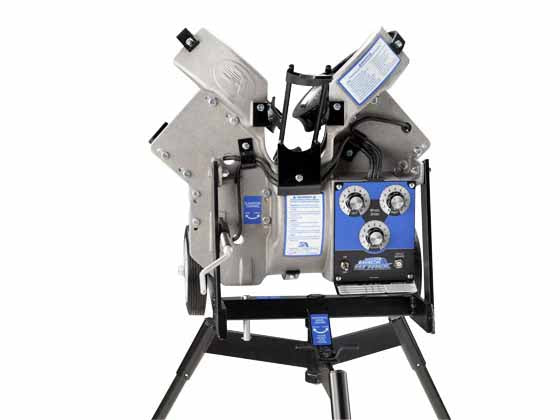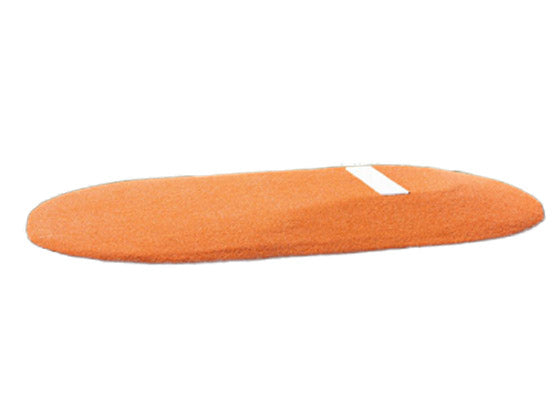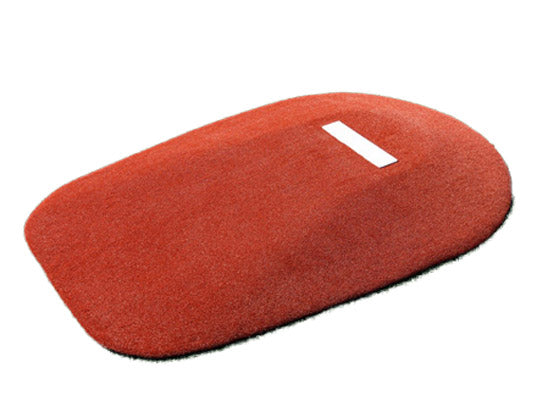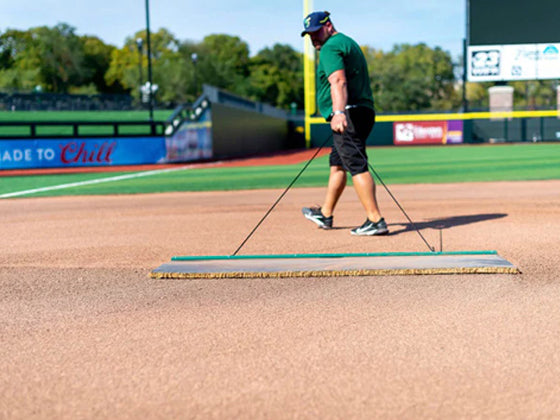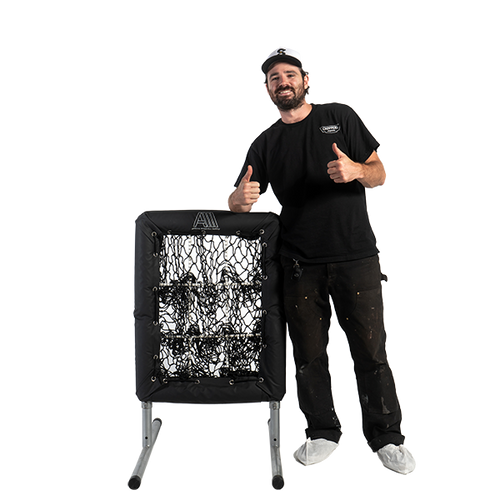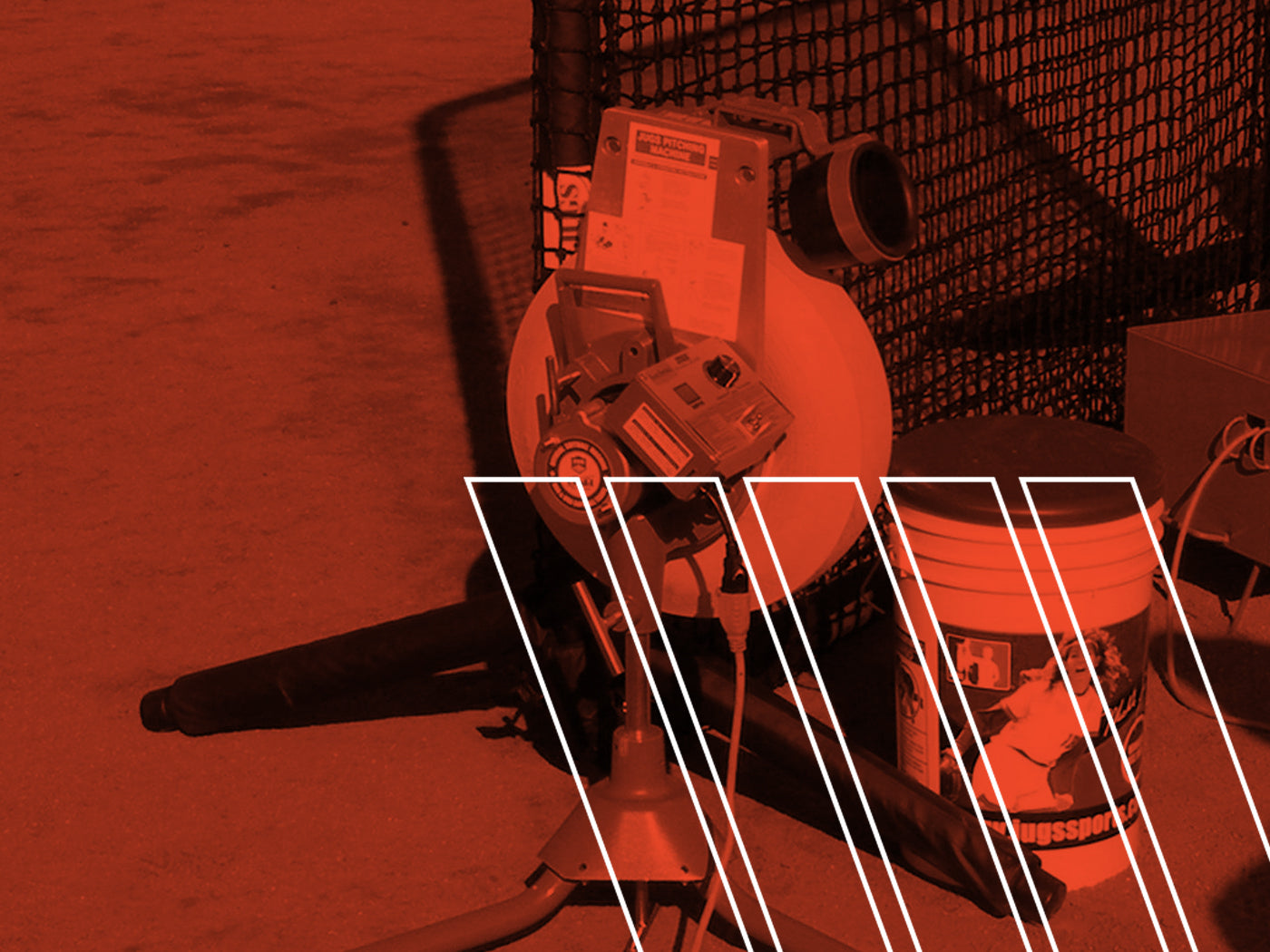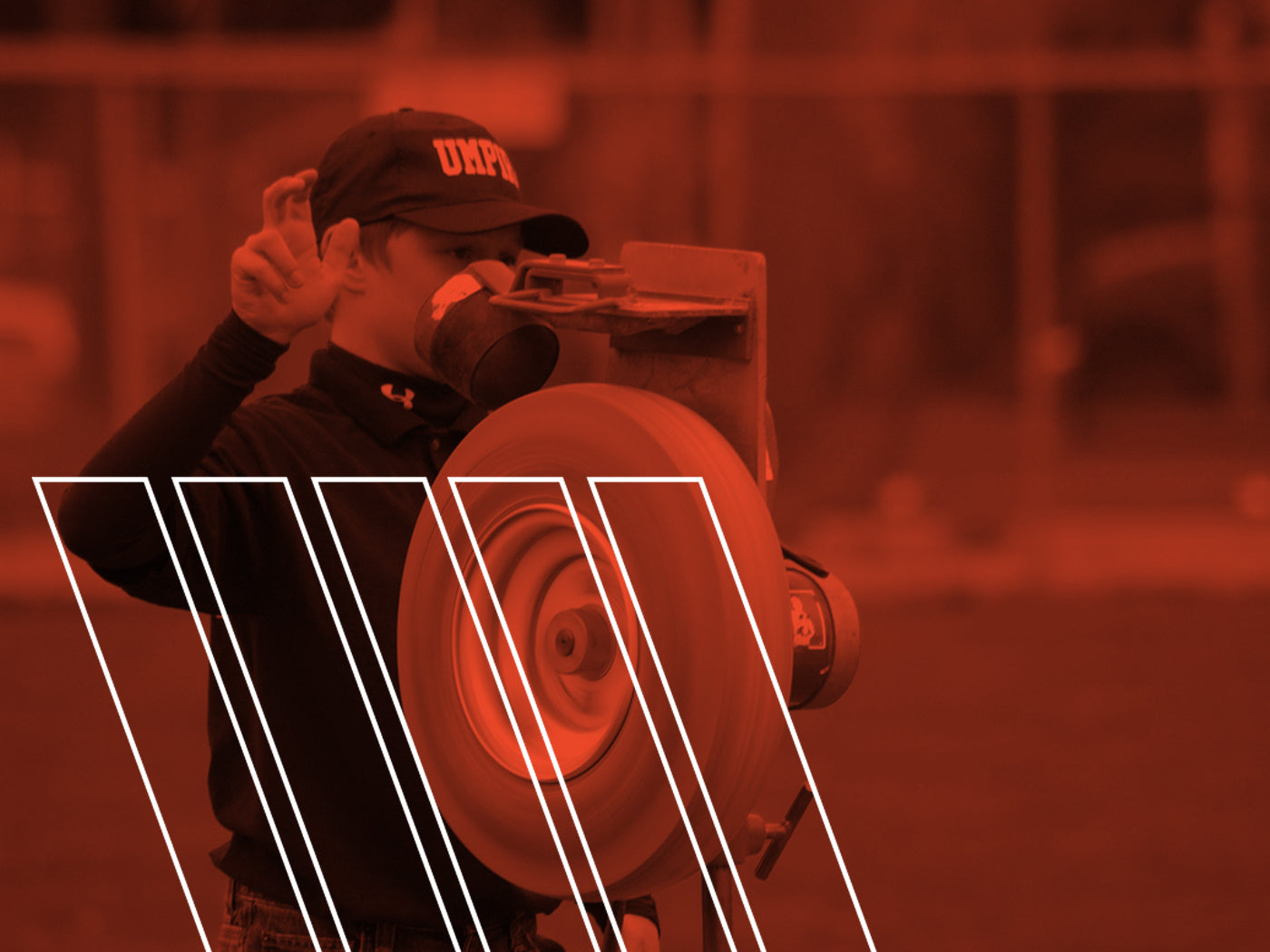Are Pitching Machines Bad?
We get this question all the time from customers, and the short answer is no, pitching machines are not bad. In fact, professional players in the MLB use pitching machines regularly, and plenty of little leagues approve of pitching machines being used for competition games.
Some might say that these machines mess up a batter's timing or that a pitching machine's release point is unrealistic. They aren't wrong when they say that, but there are both sides to this debate. The important thing is to understand how to use a pitching machine correctly.
In this article, we will look at the pros and cons of pitching machines and answer the question of whether or not these machines are good or bad.
Benefits of a Pitching Machine
To be a good hitter in baseball, you need to put the time in and work on your skills. A pitching machine can help cater to independent skills that a hitter might be lacking, such as confidence at the plate, consistency, and hand-eye coordination. Nowadays, many companies offer customizations for pitching machines, allowing you to upgrade it to fit your needs.
Redefine Batting Practice
Customers often ask us, "Are pitching machines good for batting practice?" The answer is yes. Whether you're a little league or a professional, a pitching machine can help you get more reps in and help you work on your swing. They can also help you learn how to hit curveballs, which almost every player struggles with.
Improve Hitting Mechanics and Batting Technique
A baseball pitching machine can significantly help a young player develop their skills at the plate. In addition, it provides the same pitches for a batter to swing at and improve their posture or position.
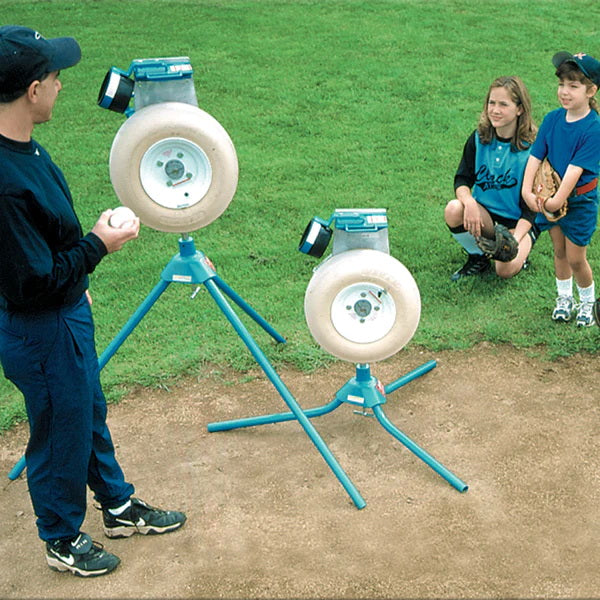
If you struggle to hit the ball consistently, this is an excellent time to work on your swing. Some batters have a hard time finding a natural movement, so a pitching machine would provide the opportunity to work on those mechanics.
Work on Timing
Pitching machines are helpful to practice timing the ball since it throws the same pitch. Hitters can practice the same speed, whether faster or slower, for as long as they like.
This is perfect for working on hand-eye coordination, allowing batters to lock onto the ball. Furthermore, it allows batters to develop a sense of timing if they are new to playing.
Target Areas
While the same pitch speed consistency is one thing, the location of the ball is another. Most machines can be moved slightly in a given direction to help with the location of the ball.
For example, if you need to work on fastballs that hit just outside the corner of the batter’s box, you can adjust the machine. If you need to hit pitches that land on the inside, the pitching machine can help with that as well.
Drawbacks of a Pitching Machine
While pitching machines have a plethora of positives, there are negatives to consider. Repetitive movements can help with mechanics, but nothing beats hitting against a real pitcher.
Negative Timing or Rhythm
Depending on the pitching machine used, it might mess with the rhythm and timing of batters. Hitting the same speed pitches from a pitching machine takes away the surprise of a human throwing it. Although it can throw consistent strikes, this can sometimes mess with your timing.
Live pitching allows batters to visually see how pitchers move to obtain cues and deliver the ball. You never get to make real-time adjustments to hit the ball without a real pitcher delivering those pitches.
Bad Release Points
Some people worry about the release points of pitching machines being too low. They think the batter will get confused if the release point is lower than the release point from a live pitcher.
We've trained with hitting machines for years now, and we know that as long as the baseball enters the strike zone, the batter will have a chance to work on their timing, swing, and hand-eye coordination.
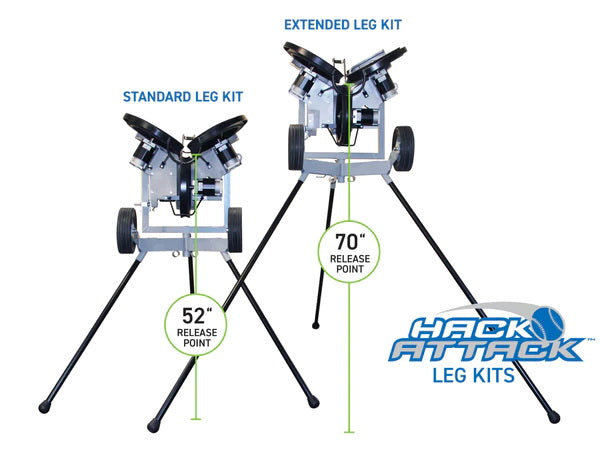
If you're still worried about release points, you can put the machine on a raised pitching mound or purchase extended legs.
Do Pros Hit Off Pitching Machines?
At training camps or MLB baseball practices, pros hit off pitching machines. The best players in the world still need to work on their hitting techniques and getting in reps.
If you show up to an MLB game early, you'll likely see a Hack Attack pitching machine setup behind an L screen, pitching to batters during batting practice.

Hitters usually spend some time on pitching machines to warm up or whenever a pitcher is unavailable to throw to them. This allows hitters to save time if they are waiting for a pitcher or need to work on specific issues.
MLB players use machines nowadays more than ever because of how far pitching machine technology has come. The pitching machines nowadays can throw fastballs, curveballs, sliders, and more at speeds up to 100 mph. They are great for team drills and solo pitching machine drills. This makes pitching machines attractive training tools for most MLB clubs, colleges, high schools, and more.
Pitching machines are a great alternative whenever a hitter needs to get reps in. In fact, MLB teams rarely go without one.
In addition, professional players can work on pinch-hitting or even bunting. Getting into the proper position and footwork down is crucial in those situations, so a baseball pitching machine offers practice for that.
Which Pitching Machines Do the MLB Use?
MLB teams use a variety of advanced baseball machines. Examples of the two most common pitching machine brands would be the Sports Attack with the Hack Attack and Jr Hack Attack machine, Jugs with the BP3, and Spinball with the Wizard 3.
Another pitching machine that some MLB teams use is the BATA-2. This one throws variable pitches of your choice and up to 100 MPH.
Some machines are ahead of their time, especially ones that track hitting data and throw variable pitches to make it as realistic as possible. As technology grows for pitching machines, it brings the gap closer for pitchers and hitters.
Pitching Machines vs. Live Pitching
Our customers always ask us if a pitching machine is better than live pitching or vice versa. We covered this in the sections above and listed the pros and cons, but let's take it a step further and see which is better: pitching machine vs. live pitcher.
We believe a real pitcher is better if they can throw at a level that will give you the needed practice. However, having a pitcher available at all times is not always a possibility, so a pitching machine is a better option when there is no pitcher around.
Let's explore this question more and see if Trevor Bauer's friends find it harder to hit from a pitching machine or from him.
Types of Pitches: Limited vs. Unlimited
Another factor to consider when asking "Are pitching machines harder to hit?" is the variety of pitches they can throw. Basic machines are often limited to fastballs and maybe a basic breaking ball. More advanced (and expensive) models can simulate a wider array of pitches, but they still pale in comparison to the repertoire of a skilled human pitcher.
This limitation can make machines easier to hit in some ways. Batters can gear up for a specific pitch type, knowing they won't be surprised by something completely different. But it can also make them harder to hit when trying to prepare for the diverse pitch mix you'll face in games.
I've seen players develop bad habits from facing too narrow a range of machine pitches. They start looking for the same pitch in the same location every time, which can be a recipe for disaster against crafty live pitchers.
The key is to use machines strategically. Work on hitting specific pitch types, then mix it up to challenge yourself. Some coaches even use multiple machines to simulate different pitches in a more game-like sequence. We also have a wiffle ball pitching machine product variety.
Practice Efficiency: Volume vs. Quality
One undeniable advantage of pitching machines is the sheer volume of swings they allow. You can take hundreds of cuts in a single session, far more than you could against live pitching without burning out arms.
This high-volume practice can be great for developing muscle memory and working on specific mechanics. But it's a double-edged sword. Are pitching machines harder to hit in terms of quality practice? Often, yes.
The danger lies in mindless repetition. It's easy to fall into bad habits when you're just going through the motions against a machine. Without the feedback and adjustments required in live BP, you might be reinforcing flaws in your swing.
I always emphasize quality over quantity with my players. It's better to take 50 focused, purposeful swings against a machine than 500 lackadaisical hacks. Use the machine as a tool for deliberate practice, not mindless repetition.
Game Situations: Isolated vs. Integrated
Baseball is a situational sport. The approach to hitting changes dramatically based on the count, number of outs, runners on base, and score of the game. This is an area where pitching machines fall woefully short.
Machines can't adjust their "strategy" based on the game situation. They can't throw you a nasty slider when you're sitting on a 3-2 fastball with the game on the line. This lack of situational practice can make machines easier to hit in isolation, but potentially harder to hit in terms of preparing for real games.
I've seen players who crush it in the batting cage struggle when the pressure's on in game situations. They haven't developed the situational awareness and adaptability that comes from facing thinking, reacting pitchers.
To combat this, coaches often need to create artificial game situations during machine practice. Call out different scenarios, have players visualize pressure situations, or even set up mini-games within the cage. It's not perfect, but it helps bridge the gap between machine practice and game reality.
Physical Factors: Consistent vs. Variable

When we ask "Are pitching machines harder to hit?", we also need to consider the physical environment. Machines create a very controlled setting. The lighting is usually consistent, there's no wind to factor in, and the batter's box doesn't change.
This consistency can make machines easier to hit in some ways. You don't have to deal with the sun in your eyes or adjust to a mound that's slightly off-center. But it can also make them harder to hit in terms of preparing for the variables you'll face in games.
I've known players who become too reliant on the perfect conditions of indoor batting cages. When they step onto a real field with uneven ground, changing light conditions, and unpredictable wind, they struggle to adjust.
The best practice regimens incorporate both controlled machine work and variable outdoor hitting. This balanced approach helps develop the adaptability needed for success in real game conditions.
Feedback and Adjustment: Automatic vs. Interactive
One significant factor that can make pitching machines harder to hit is the lack of immediate feedback and adjustment. When you're facing a live pitcher, there's a constant feedback loop. The pitcher sees where their pitches end up and adjusts. You, as the hitter, can read the pitcher's body language and tendencies.
Machines offer none of this interactivity. They'll keep throwing the same pitch to the same spot regardless of whether you're making solid contact or whiffing completely. This can make it harder to make the micro-adjustments that are crucial in hitting.
I always encourage my players to be hyper-aware during machine practice. Pay attention to where the ball is making contact with your baseball bat. Notice your body position at the point of contact. Without the natural feedback loop of live BP, you need to be your own coach in the cage.
Long-Term Development: Specialized vs. Holistic
When considering if pitching machines are harder to hit in the context of long-term player development, we need to look at the big picture. Machines excel at allowing hitters to work on very specific aspects of their swing. Want to improve your opposite-field power? A machine can feed you outside pitches all day long.
This specialization can be incredibly valuable. I've seen players make dramatic improvements in particular areas of their hitting by using machines for targeted practice. But there's a risk of becoming over-specialized.
Baseball requires a well-rounded skill set. Relying too heavily on machines can leave gaps in a player's development. They might struggle with pitch recognition, timing variations, or the mental aspects of hitting.
The most successful hitters I've worked with use machines as part of a holistic training approach. They combine machine work with live BP, soft toss, tee work, and mental training. This balanced method ensures they're prepared for anything they might face on the field.
Conclusion - Why Pitching Machines Are Good
Even the best players in the world still use pitching machines, and every MLB club owns at least one. They are a valuable tool to help develop hitting skills no matter what level of the game you are at.
Check out this recent pitching machine study where we surveyed 126 customers about their pitching machines and the performance increase they enjoyed from their machines.
While there are some cons to solely using a pitching machine throughout your career, the positives can significantly outweigh the negatives when used properly. Depending on the pitching machine you use, it will likely give different results.
If you use the pitching machine correctly and balance it with live pitching for practice, every player should benefit regardless. Having a pitching machine versus not one at all makes a big difference.
If you are still debating whether or not a pitching machine is a good idea for you, try reading through our article on how a pitching machine works. Understanding how a pitching machine works and the difference between the different types of pitching machines will help you know if a pitching machine is a good or bad option for you and your kid. If you need more help finding the best pitching machine, check out this article here.

 Contact Us
Contact Us